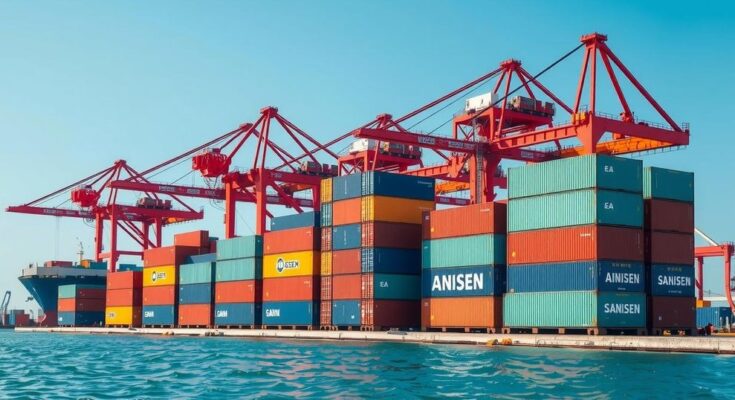China has responded to U.S. tariffs by imposing its own levies on U.S. imports, including significant tariffs on coal, LNG, and crude oil. The ongoing trade tensions threaten global market stability, with potential for further escalations. The U.S. has also paused tariffs on Mexico and Canada after securing commitments for border enforcement measures from these nations, indicating fluid trade negotiations. EU leaders have also expressed their readiness to counter U.S. tariffs if imposed.
China has retaliated against the United States by imposing targeted tariffs on U.S. imports following President Trump’s new levies on Chinese goods. Effective immediately, an additional 10% tariff applies to all Chinese exports to the U.S. Concurrently, China has implemented a 15% levy on U.S. coal and liquefied natural gas (LNG), and a 10% tariff on crude oil, agricultural equipment, and select vehicles.
Additionally, China’s Finance Ministry announced an anti-monopoly investigation into Google, along with potential sanctions against U.S. companies such as PVH Corp, which owns the Calvin Klein brand, and Illumina, a biotechnology firm. China has also introduced export controls on essential metals used in electronics, military equipment, and solar panels. The U.S. exports involved will be subject to tariffs starting February 10, allowing negotiations to progress between the two nations.
Despite these measures, China’s response is relatively limited compared to the broad tariffs imposed by the Trump administration. President Trump, who initiated a trade conflict with China in 2018 over the U.S. trade deficit, previously warned that tariffs could be escalated if China fails to reduce the flow of fentanyl to the U.S.
Trump has paused planned tariffs on Mexico and Canada after securing commitments for enhanced border enforcement from both countries, alleviating immediate trade tensions. This development has received positive feedback from Canadian industry leaders concerned about disrupted supply chains. The ongoing trade disputes could lead to heightened volatility in global markets, as economists suggest the possibility of further tariffs looms large.
EU leaders have cautioned about the risks of a trade war, with indications that they could retaliate against potential U.S. tariffs. President Trump has hinted that negotiations may differ significantly with the EU compared to those with Mexico and Canada, underlining the challenges in achieving a trade consensus.
Despite recognizing the risk of short-term consumer impacts from tariffs, Trump emphasizes their necessity for curbing immigration and drug smuggling, as well as fostering domestic production.
The current trade tensions between China and the United States represent an escalation in a long-standing economic conflict that began during Trump’s presidency. The U.S. has sought to address imbalances in trade with China, leading to significant tariffs on both sides. The imposition of tariffs is primarily aimed at reducing the flow of illicit drugs and protecting domestic industries, adding complexity to U.S.-China relations. Furthermore, global market dynamics remain complicated as other nations, including Mexico and Canada, navigate their trade deals amidst this broader context.
In summary, the trade conflict between the U.S. and China has intensified with China implementing retaliatory tariffs, further complicating relations amid ongoing negotiations. The pause in tariffs on Mexico and Canada reflects a temporary stabilization in North American trade. However, the potential for future tariffs remains high as leaders reflect on long-term strategies to mitigate economic impact while addressing drug trafficking and trade imbalances.
Original Source: www.hindustantimes.com




